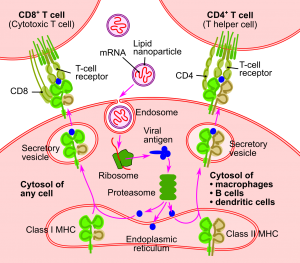Why Would God Command Circumcision?
At last. There is light at the end of the tunnel.
Skeptics—and Christians—ask a lot of questions about the scientific accuracy of the Bible’s Old and New Testaments. In many instances, these questions have little to do with the creation accounts in Scripture. Instead, they involve biblical passages that seem to present scientifically inaccurate information or raise questions about the soundness of God’s designs and purposes.
For example, several people have asked me about the practice of circumcision first described in Genesis 17:10–12:
This is my covenant with you and your descendants after you, the covenant you are to keep: Every male among you shall be circumcised. You are to undergo circumcision, and it will be the sign of the covenant between me and you. For the generations to come every male among you who is eight days old must be circumcised, including those born in your household or bought with money from a foreigner—those who are not your offspring.
Specifically, the questioners want to know why God would create human males—and other mammals—with a foreskin on their penises only to then instruct them to remove it. Today we know that circumcision offers demonstrable medical benefits. Don’t the medical benefits of removing the foreskin imply that this anatomical feature is a bad design? It seems like God could have come up with a better plan.
Circumcision Is a Ceremonial Practice
In response to this understandable challenge, it is important to keep in mind that the practice of circumcision, first and foremost, signified the covenantal relationship between Yahweh (the God of Israel) and Abraham and his descendants. God instituted the practice as a reminder to Israel that they owed their very existence to Yahweh. God promised Abraham a son well after Sarah was of childbearing age. And that son, Isaac, gave rise to the nation of Israel.
In other words, because circumcision is a religious ritual with covenantal significance, this practice does not require a medical or biological rationale. Neither does the practice necessarily mean that the foreskin is a flawed design.
The Medical Accuracy of the Covenant of Circumcision
This caveat aside, the instructions Yahweh gave to Abraham display remarkable medical insight. In the classic work,None of These Diseases, physician S. I. McMillen discusses the uncanny medical accuracy of the biblically prescribed practice of circumcision.1
Specifically, God commanded Abraham to perform circumcisions on the eighth day after birth (Genesis 17:12). As McMillen points out, this is the ideal time to carry out the procedure because it ensures that the infant’s blood readily clots after circumcision. For the first four days after birth, an infant has a limited amount of vitamin K and clotting factors in its blood. On day five, the level of these materials increases, reaching the maximum level on day eight.
Additionally, God commanded that a flint knife be used to perform the circumcision (Joshua 5:2). According to McMillen, this practice is significant because the act of sharpening a flint knife removes the surface layer, leaving behind uncontaminated stone that would have minimized infection.
<!–

“Schema of the RNA Vaccine Mechanism” by Jmarchn is licensed under CC BY-SA 3.0
–>
One has to marvel at the Bible’s medical prescience. Given the pre-scientific understanding of the ancient Near East, Abraham could not have possessed this medical insight apart from divine wisdom.
Is the Foreskin a Flawed Design?
As it turns out circumcision provides clear medical benefits, offering a rationale for the practice that goes beyond religious ceremony. For example, in recent years, biomedical researchers have discovered that circumcision:
- Prevents the spread of AIDS2
- Prevents cancer of the penis3
- Prevents cervical cancer4
And these insights lead us to the questioners’ challenge: Is the foreskin a flawed design.
This objection assumes that the foreskin serves no function at all. Most male mammals have foreskin covering their penises (though they are often referred to as penile sheaths). These structures serve a variety of functions in animals that include protective and reproductive roles. And increasing evidence suggests that the foreskin also serves similar important functions in humans that include:
- Providing protection in utero, during infancy, and in adulthood
- Serving as a component of the immune system
- Contributing to sexual arousal and stimulation
In light of these functions, a number of physicians now question if circumcision is necessary. Some even express concern that circumcision may be harmful. For this reason, biomedical practitioners debate whether the benefits of keeping the foreskin outweigh the benefits of circumcision.5 Those who argue in favor of keeping the foreskin intact maintain that the benefits of circumcision—namely, the avoidance of infection and disease—can be accomplished through effective hygiene.
Regardless of how this debate ends, the new scientific insights make it hard to argue that the foreskin is a flawed design.
Again, the primary purpose of circumcision in ancient Israel was religious in scope. Still, it is remarkable that the timing and details of the process prescribed by Yahweh reflect sound medical practices. And the recognition that circumcision confers medical benefits indicates that God’s plan for signifying his covenant with Abraham and his descendants was, indeed, sound and reflected divine wisdom.
Resources
- “Scripture’s Medical Wisdom Answers a Skeptic’s Challenge” by Fazale Rana (article)
Endnotes
- S. I. McMillen, None of These Diseases, rev., upd., and exp. ed., ed. by David E. Stern (Grand Rapids: Fleming H. Revell, 1984), 80–85.
- Katherine Harmon, “Can Male Circumcision Stem the AIDS Epidemic in Africa?,” Scientific American (November 29, 2011), reprinted in Nature (November 30, 2011): doi:10.1038/nature.2011.9520.
- Brian J. Morris et al., “The Strong Protective Effect of Circumcision against Cancer of the Penis,” Advances in Urology (2011): article ID 812368, doi:10.1155/2011/812368.
- Salynn Boyles, “Male Circumcision Cuts Women’s Cervical Cancer Risk,” WebMD, January 6, 2011, https://www.webmd.com/cancer/cervical-cancer/news/20110106/male-circumcision-cuts-womens-cervical-cancer-risk.
- Roger Collier, “Vital or Vestigial? The Foreskin Has Its Fans and Foes,” Canadian Medical Association Journal 183 (November 22, 2011): 1963–64, doi:10.1503/cmaj.109-4014.






